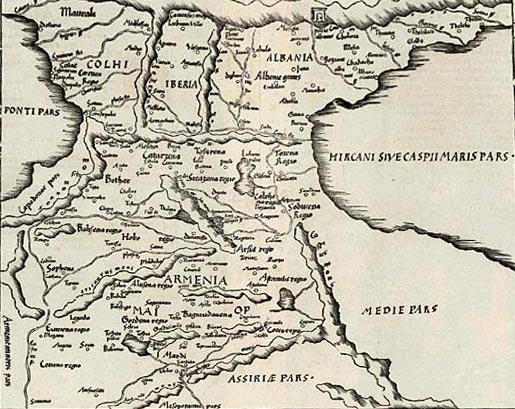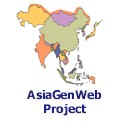Armenia
Armenia
We are always ready welcome volunteers for the exciting WorldGenWeb project. One of the openings is as a Country Coordinator for this country. If you have an interest in helping us develope this valuable resource by volunteering to serve as the Country Coordinator, please contact the Regional Coordinator.

Welcome to the ArmeniaGenWeb Project homepage. This site is part of the WorldGenWeb Project and is the local resource page for research in Armenia.
If you need assistance with this website, please contact me. Please do not send me your queries.
The ArmeniaGenWeb Project is in need of volunteers to host query boards, provide look-up resources, transcribe data, help with archival research and more. If you might be interested in volunteering please contact me.
General information about Armenia
The origins of the Armenian people are obscure. According to ancient Armenian writers, their people descend from Noah's son Japheth. A branch of the Indo-Europeans, the Armenians are linked ethnically to the Phrygians, who migrated from Thrace in southeastern Europe into Asia Minor late in the second millennium B.C., and to the residents of the kingdom of Urartu, with whom the Armenians came into contact around 800 B.C. after arriving in Asia Minor from the West. Although ethnologists disagree about the precise timing and elements of this ethnic combination (and even about the origin of the term Armenian), it is generally agreed that the modern Armenians have been a distinct ethnic group centered in eastern Anatolia since at least 600 B.C.
In the nineteenth century, the Armenians were the most urban of the Transcaucasian peoples, but they were also the most dispersed. A merchant middle class was the most powerful social group among the Armenians, although the church and secular intellectuals also provided leadership. Armenians pioneered exploitation of the oil deposits in and around Baku, and the economic growth of the ancient Georgian capital, Tbilisi, was largely an enterprise of Armenian merchants and small industrialists.
The massacres and displacements that occurred between 1895 and 1915 removed nearly all the Armenian population in the Turkish part of historical Armenia. In 1965 the Soviet Union estimated that 3.2 million Armenians lived in all its republics. The Turkish census the same year showed only 33,000 Armenians in Turkey, most of them concentrated in the far west in Istanbul. In 1988 Armenia's population declined by 176,000, reversing a trend over the previous decade of average population growth of 1.5 percent per year. According to the 1989 census, the population of Armenia was about 3,288,000, an increase of 8 percent from the 1979 census figure. An official estimate in 1991 put the population at 3,354,000, an increase of 2 percent since 1989. In 1989 Armenians were the eighth largest nationality in the former Soviet Union, totaling 4,627,000. At that time, only about twothirds of the Armenians in the Soviet Union lived in Armenia. Some 11.5 percent lived in Russia, 9.4 percent in Georgia, 8.4 percent in Azerbaijan, and the remaining 4 percent in the other republics. In recent years, Armenian refugees from Azerbaijan, Georgia, Russia, and the Central Asian republics have settled in Armenia, compounding an already severe housing shortage. The number of Armenians living in other countries, primarily France, Iran, Lebanon, Syria, and the United States, has been estimated at between 3 million and 9 million.
The People
About 90 percent of the population are Armenian.
The Languages
The official language is Armenian.
The Government
The government of Armenia is a republic with a president and a parliament.
The Provinces
Armenia is divided into 1 city; Yerevan and 10 provinces; Aragatsotn, Ararat, Armavir, Geghark'unik', Kotayk', Lorri, Shirak, Syunik', Tavush, and Vayots' Dzor.
Resources
Links
There are no articles in this category. If subcategories display on this page, they may have articles.




